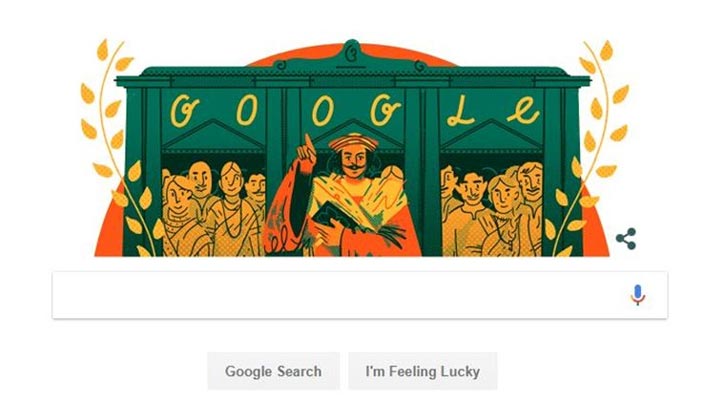 New Delhi:
New Delhi: Tech giant Google on Tuesday marked the 246th birth anniversary of social reformer Raja Ram Mohan Roy with a doodle, remembering the “father of the Indian Renaissance.” Ram Mohan Roy took on orthodoxy, power, religion and relentlessly campaigned for the abolition of the barbaric practice of Sati, championing the cause of women rights.
Ram Mohan Roy was born in Radhanagar of Hooghly district, in West Bengal. In his early years, he learned Persian and Arabic along with Sanskrit, which influenced his thinking about one god, as he preached unity of God and made early translations of Vedic scriptures into English in the later parts of his life.
After the death of his father in 1803 he moved to Murshidabad where he published his first book, a Persian treatise with an Arabic preface, “Tuhfat-ul-Muwahhidin” or “A Gift to Monotheism”. In addition to acquiring knowledge of the ancient Vedantic literature, he also studied the Tantric works with the aid of Hariharananda Tirthaswami. He mastered the Kalpa Sutra and other Jain texts, along with improving his knowledge of English language.
Ram Mohan Roy took a keen interest in European politics and followed the cause of the French Revolution. In 1814 he settled in Calcutta and in 1815 founded the Atmiya Sabha. in 1828 he established the Brahmo Samaj. In 1830, Ram Mohan Roy traveled to the United Kingdom as an ambassador of the Mughal Empire to ensure that Lord William Bentinck’s Bengal Sati Regulation, 1829 banning the practice of Sati was not overturned.
According to the Brahmo Samaj, as a nationalist reformer, Ram Mohan Roy had a three-fold mission, “As a Hindu Reformer, he gave a Unitarian reaction of the Hindu Shastras from the Vedanta and the Mahanirvana Tantra. As a Muslim defender of the faith, he wrote the Tuhfat-Ul-Muwahhiddin and the Monozeautul Adiyan, which were polemical works, and as a Christian, he gave a Unitarian version of the entire body of scriptures, old and new, in his controversies with the Christian Missionaries.”
The Google doodle celebrating the great Indian Social reformer has been designed and created by Beena Mistry, a UX Designer, and Illustrator based out of Toronto, Canada.
 New Delhi: Tech giant Google on Tuesday marked the 246th birth anniversary of social reformer Raja Ram Mohan Roy with a doodle, remembering the “father of the Indian Renaissance.” Ram Mohan Roy took on orthodoxy, power, religion and relentlessly campaigned for the abolition of the barbaric practice of Sati, championing the cause of women rights.
New Delhi: Tech giant Google on Tuesday marked the 246th birth anniversary of social reformer Raja Ram Mohan Roy with a doodle, remembering the “father of the Indian Renaissance.” Ram Mohan Roy took on orthodoxy, power, religion and relentlessly campaigned for the abolition of the barbaric practice of Sati, championing the cause of women rights.